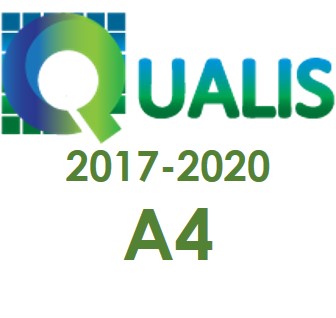The ‘Brazilian jeitinho’ from a cognitive-interactional perspective
DOI:
https://doi.org/10.22481/el.v18i2.6287Keywords:
Cultural linguistics; Cultural conceptualizations; Cultural metaphors; ‘Brazilian jeitinho’; Gestural metaphor.Abstract
According to cultural linguistics, world experiences and interpretations of different speech communities should be conceived dynamically regarding cultural conceptualizations. ‘Brazilian jeitinho’ is generally seen as a creative strategy applied in emergent situations and oscillates between favor and corruption. The article aims to realize a microanalysis of an elicited conversation between four professors at the UFMG (two of them are Brazilian and two originally German). The objective is to reveal how the concept ‘Brazilian jeitinho’ is co-constructed multimodally through conceptual metaphor on the linguistic level and how metaphoric gestures, as well as prosodic cues are present in this interactional process. We found seven cultural metaphors which revealed that the interlocutors co-constructed the concept in question (a) in a multimodal way, (b) primarily through basic image schemas and by means of conceptual metaphors. Additionally, the incorporation of prosodic and gestural metaphors was more highlighted in the case of the two Brazilian participants.
Downloads
References
BÜHLER, K. Sprachtheorie: die Darstellungsfunktion der Sprache. Stuttgart: Fischer, 1982. Edição original: 1934.
CIENKI, A. Why study metaphor and gesture? In: _____; MÜLLER, C. (Org.). Metaphor and Gesture. Amsterdam, Philadelphia: John Benjamins, 2008. p. 5-25.
CIENKI, A.; MÜLLER, C. Metaphor, Gesture, and Thought. In: GIBBS, R. W. Jr. (Org.). The Cambridge Handbook of Metaphor and Thought. Cambridge: Cambridge University Press, 2008. p. 483-501.
COSTA, S. O Brasil de Sérgio Buarque de Holanda. Revista Sociedade e Estado, n. 29(3), p. 823-839, 2014.
DAMATTA, R. O que faz o brasil, Brasil? Rio de Janeiro: Rocco, 1986.
FERREIRA, M. C. et al. Unraveling the mystery of Brazilian Jeitinho: a cultural exploration of social norms. Personality and Social Psychology Bulletin, n. 38(3), p. 331-344, 2012.
FILLMORE, C. Topics in Lexical Semantics. In: COLE, R. W. (Org.). Current Issues in Linguistics. Bloomington: Indiana University Press, 1975. p. 76-138.
GRADY, J. E. Foundations of meaning: Primary metaphors and primary scenes. Berkeley: Doctoral dissertation, Department of Linguistics, University of California at Berkeley, 1997.
GRADY, J. E. Primary metaphors as inputs to conceptual integration. Journal of Pragmatics, n. 37, p. 1595–1614, 2005.
HOLANDA, S. B. Raízes do Brasil. Companhia das Letras, 1995. Edição original: 1936.
KÖVCSES, Z. Metaphor in Culture. Universality and Variation. Cambridge: Cambridge University Press, 2005.
LAKOFF, G. Women, Fire and Dangerous Things: What Categories Reveal about the Mind. Chicago: University of Chicago Press, 1987.
LAKOFF, G.; JOHNSON, M. Metaphors we live by. Chicago: The University of Chicago Press, 2003. Edição original: 1980.
LAKOFF, G.; JOHNSON, M. Philosophy in the Flesh. The Embodied Mind and its Challenge to Western Thought. New York: Basic Books, 1999.
MÜLLER, C. Gestures as a medium of expression: The linguistic potential of gestures. In: MÜLLER, C. et al. (Org.). Body – Language – Communication. An International Handbook on Multimodality in Human Interaction. Volume 1. Berlin, Boston: De Gruyter Mouton, 2013. p. 202-217.
MÜLLER, C.; LADEWIG, S. H.; BRESSEM, J. Gestures and speech from a linguistic perspective: A new field and its history. In: MÜLLER, C. et al. (Org.). Body – Language – Communication. An International Handbook on Multimodality in Human Interaction. Volume 1. Berlin, Boston: De Gruyter Mouton, 2013. p. 55-81.
PALMER, G. B. Toward a Theory of Cultural Linguistics. Austin: University of Texas Press, 1996.
PERLMAN, M.; GIBBS, R. W. Jr. Sensorimotor simulation in speaking, gesturing, and understanding. In: MÜLLER, C. et al. (Org.). Body – Language – Communication. An International Handbook on Multimodality in Human Interaction. Volume 1. Berlin, Boston: De Gruyter Mouton, 2013. p. 512-533.
SCHMIDT, T.; WÖRNER, K. EXMARaLDA – Creating, analysing and sharing spoken language corpora for pragmatic research. Pragmatics, n. 19, p. 565-582, 2009.
SCHRÖDER, U. Kommunikationstheoretische Fragestellungen in der kognitiven Metaphernforschung. Eine Betrachtung von ihren Anfängen bis zur Gegenwart. Tübingen: Narr Verlag, 2012.
SELTING, M. et al. Um sistema para transcrever a fala-em-interação: GAT 2. Traduzido e adaptado por Ulrike Schröder et al. Veredas, v. 20, n. 2, p. 6-61, 2016.
SHARIFIAN, F. Cultural Conceptualisations and Language: Theoretical framework and applications. Amsterdam, Philadelphia: John Benjamins Publishing, 2011.
SHARIFIAN, F. Cultural Linguistics. In: SHARIFIAN, F. (Org.). The Routledge Handbook of Language and Culture. London, New York: Routledge, 2015. p. 473-492.
SHARIFIAN, F. Cultural Linguistics. The State of the Art. In: SHARIFIAN, F. (Org.). Advances in Cultural Linguistics. Singapore: Springer, 2017. p. 1-28.
Downloads
Published
How to Cite
Issue
Section
License

Estudos da Língua(gem) is licensed under a Creative Commons Attribution 4.0 International License.
Authors who publish in the journal Estudos da Língua (gem) agree with the following terms:
The journal Estudos de Língua(gem) maintains the copyrights of the contributions published. These rights include the publication of the contribution and make its content available for free through the portal.













